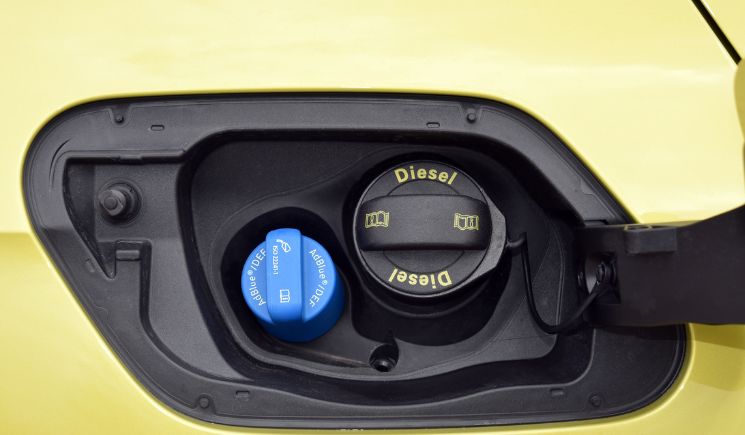Nothing can ruin your day faster than the “loose fuel cap” warning message popping up right after filling up your Nissan Altima’s gas tank. You tighten the cap until it clicks. But the light appears anyway, often lingering for weeks of driving despite your best efforts.
Then that’s the point you will definitely get the question of what causes this issue to happen?
This comprehensive guide will unravel the mysteries behind the dreaded loose fuel cap warning light in the Nissan Altima. We’ll provide insight into what triggers the sensor to turn on the alert and why the light stubbornly remains lit even after properly resealing the fuel filler cap.
Armed with the inside knowledge of the science behind the nagging loose fuel cap alert, you’ll better understand what steps are effective and ineffective in clearing the warning promptly. We’ll demystify why quick fixes rarely make the light immediately disappear. The insights which you will about to read will save you time, money, and frustration chasing down the actual root cause. So what are we waiting for? Let’s unravel the maddening mystery of the Altima’s loose fuel cap issue!
Reasons That Can Cause The Issue
Worn or cracked gas cap seal
- Normal wear and tear from twisting on/off at refueling slowly degrades the rubber seal.
- Tiny cracks develop that allow fuel vapors to escape.
- This trips the EVAP monitor sensor and turns on the loose fuel cap warning even when tightened properly.
Dust or dirt on the seal and mating surface
- Grit, road dust, sand, and other debris trapped on the seal or filler neck prevent the gas cap from making a complete pressure seal.
- This allows vapors to seep out and mimic a loose cap.
Incorrect replacement or aftermarket gas cap
- Cheap aftermarket fuel caps often do not meet the OEM specifications for maintaining EVAP system pressure.
- The cap may appear to close correctly but still triggers the loose cap warning due to inadequate sealing.
The gas cap was not entirely on perfect specs
- After fueling up, drivers may need to remember that the cap has tightened fully after a gas fill-up.
- Without complete tightening, a slight vacuum will draw vapors past the cap and set off the alert.
- Remember that the ideal sound clicks for tightening are 3-5 clicks.
Missing tether strap
- The cap’s tether, when attached, helps align and rotate the cap precisely to the right stopping tightness for a complete seal. Without the tether, caps are prone to have a faulty tightening.
Solutions For Resolving A Loose Fuel Cap In A Nissan Altima
Thoroughly inspect the gas cap seal
- Look closely at the rubber gasket seal surface for any signs of wear, cracking, damage, or deterioration that would prevent it from forming a tight pressure seal.
- If the sealing surface is compromised, replace the gas cap with a new factory original cap or high-quality OEM spec aftermarket gas cap.
Clean the seal and filler neck
- Use a clean, lint-free rag or shop towel to remove dust, dirt, sand, debris, or grit trapped on the gas cap seal or inside the filler neck.
- Contaminants on the mating surfaces can prohibit the cap from sealing fully and allow vapors to escape.
- Remember that proper cleaning ensures a tight interface.
Reattach the tether strap if detached
- Make sure the cap’s tether strap is connected to the slot when closing the cap after refueling.
- The tether provides alignment as the cap twists on, bringing it around fully to the correct tightened orientation for maximum seal.
Reset the fuel system monitor
- Once a proper sealing gas cap is confirmed, the EVAP fuel system monitor checks for fuel vapor leaks and cap seal threshold.
- Therefore let the vehicle to complete an EVAP monitor reset cycle overnight without starting the engine. In most cases, this will turn the loose fuel cap light off.
Clear any EVAP-related trouble codes
- After addressing the gas cap seal, use an OBD2 scanner tool to clear any stored evaporative emissions DTCs.
- These codes will illuminate the light even if the cap is entirely on the closing specs.
Frequently Asked Questions About Loose Fuel Cap Nissan Altima
Q: Why does the light stays on even after tightening the gas cap properly?
A: Once activated, the EVAP monitoring system must completely redraw the fuel system vacuum and recheck adapted pressure thresholds to turn the light off. A loose fuel cap warning will only be apparent once this system relearns and reset is on complete mode over multiple driving cycles.
Q: Can I immediately reset the loose fuel cap warning myself?
A: Unfortunately, there is no quick DIY fix to reset the light instantly. The EVAP monitor reset occurs passively through normal driving once the cap seals fuel vapors properly. Patience is required for the light to clear and reset. This will usually happens within a few days.
Q: Should I be concerned if the gas cap light stays on for many miles of driving?
A: An illuminated light that remains on continuously even after sealing the gas cap properly indicates a problem. Either the cap seal is still compromised, or there is a fault in the EVAP system sensing components. My advice is that further diagnosis of the cap and EVAP system is ideal if it lingers.
Q: What is the consequence of ignoring the warning?
A: While the car can still be safely on the run with the alert illuminated, it is not ideal to ignore it purposely. Because fuel vapors can escape by increasing the emission. Also, EVAP faults can worsen and set further trouble codes if left unaddressed for an extended period.
Q: Why is it essential to have an adequately tightened fuel cap?
A: A proper tightened fuel cap helps to maintain the proper pressure in the fuel system by stopping fuel vapors from escaping into the atmosphere. It also ensures that your vehicle’s emissions control system functions effectively by helping you to comply with environmental regulations.
Q: How do I know if my fuel cap is loose?
A: The “Loose Fuel Cap” warning light on your dashboard indicates that your fuel cap might not be adequately on tightening specs. Additionally, you might notice a decrease in fuel efficiency or a strong smell of gasoline around your vehicle.

